
Figure 1. Model of the study
Cultural/heritage tourism is the fastest growing segment of the tourism industry because there is a trend toward an increased specialization among tourists. This trend is evident in the rise in the volume of tourists who seek adventure, culture, history, archaeology and interaction with local people (Bob MCkercher, 2002 PP.262). Especially, Indian tourists' interest in traveling to cultural/ heritage destinations has increased recently and is expected to continue. For example, cultural/heritage sites are among the most preferred tourism experiences in Andhra Pradesh.
The recent studies about cultural/heritage tourism focused on the characteristics of tourists who visited cultural/heritage destinations. The study attempts to investigate the relationship between cultural/heritage destination attributes and tourist satisfaction, and to identify the relationship between cultural/heritage destination attributes and tourist satisfaction in terms of selected tourists' demographic characteristics and travel behavior characteristics.
The expectancy-perception theory provided a conceptual framework for this study. The expectancy-perception theory holds that consumers first form expectations of products or service performance prior to purchasing or use. Subsequently, purchasing and use convey to the consumer beliefs about the actual or perceived performance of the product(s) or service(s). The consumer then compares the perceived performance to prior expectations. Consumer satisfaction is seen as the outcome of this comparison (Philip kolar 2006).
The study area for this study was Andhra Pradesh in cultural and heritage sites. Furthermore, it is one of world's popular destination-Lord venkateshwara attracting more than 8 Million tourists each year. The data of this study were collected from the on-site survey method. The sample population for this study was composed of tourists who visited popular tourist attractions in Andhra Pradesh between January and June in 2009 . The survey was conducted at five different sites in Andhra Pradesh. Out of 500 questionnaires, 462 were usable. Therefore, the data from 251 respondents were analyzed in this study.
Appropriate statistical analyses such as frequencies, descriptive, factor analysis, correlation analysis, multiple regressions, Multivariate Analysis of Variance (MANOVA), Analysis of Variance (ANOVA), and Multivariate Analysis of Covariance (MANCOVA) were used according to respective objectives and descriptors.
The factor analysis was conducted to create correlated variable composites from the original 28 attributes. Using factor analysis, 25 destination attributes resulted to four dimensions: General Tour Attraction, Heritage Attraction, Maintenance Factors, and Culture Attraction. These four factors then were related with overall satisfaction. Correlation analysis revealed that four factors were correlated with tourists' overall satisfaction. The multiple regression analysis revealed that there was relationship between cultural/heritage destination attributes and tourists' overall satisfaction. MANOVA revealed that there was significant difference between derived factors in relation to only total household income and the length of stay among 10 demographic and travel behavior characteristics. ANOVA revealed that there is a significant difference in the overall satisfaction of tourists by gender, past experience, and decision time to travel. Finally, MANCOVA revealed that only one of the control variables (past experience) controlled the relationship between the overall satisfaction of tourists and derived factors.
Based upon the results of this study, several recommendations can be made to increase tourists' satisfaction with Andhra Pradesh. First, comprehending what tourists seek at cultural/heritage attractions will help tourism marketers better understand their customers.
Second, identifying which attributes satisfy the tourist who visit cultural/heritage destinations will help tourism planners develop appropriate strategies to attract their customers and serve them effectively. Third, knowing who the satisfied tourists are may help reduce marketing costs and maintain cultural/heritage destinations' sustainability.
Because of people's inclination to seek out novelty, including that of traditional cultures, heritage tourism has become a major “new” area of tourism demand, which almost all policy–makers are now aware of and anxious to develop. Heritage tourism, as a part of the broader category of “cultural tourism”, is now a major pillar of the nascent tourism strategy of many countries. Cultural/heritage tourism strategies in various countries have in common that they are a major growth area, that they can be used to boost local culture, and that they can aid the seasonal and geographic spread of tourism (Richards, 1995).
In recent decades, tourism has become the world's largest industry, with $3.4 trillion in annual revenue (Indian Tourism Annual Report ,2008-09) . There is a trend toward an increased specialization among travelers, and cultural/heritage tourism is the fastest growing segment of the industry. Indian tourists interest in traveling to cultural/heritage destinations has increased recently and is expected to continue. This trend is evident in the rise in the volume of travelers who seek adventure, culture, history, archaeology and interaction with local people (S.P. Ahuja, 1977).For Indian families, for example, the five top destinations-Pilgrim Centres (51%), hertiage Centre (49%), Holiday resorts (44%), Historic (21%); and Leisure (35%). The top three activities of Indian resident travelers were recently found to be shopping (33%); outdoor activities (18%); and visiting Heritage and/or historic sites (16%).(Andhra Pradesh tourism development corp. 2008) .
Recent studies about cultural/heritage tourism have focused on identifying the characteristics, development, and management of cultural/heritage tourism, as well as on investigating demographic and travel behavior characteristics of tourists who visit cultural/heritage destinations. Pearce and Balcar (1996) analyzed destination characteristics, development, management, and patterns of demand through an element-byelement comparison of eight heritage sites on the West Coast of New Zealand. Silberberg (1995) provided a common pattern of cultural/heritage tourists by analyzing age, gender, income, and educational level. Formica and Uysal (1998) explored the existing markets of a unique annual event that blends internationally well-known cultural exhibitions with historical settings. Behavioral, motivational, and demographic characteristics of festival visitors were examined by using a posteriori market segmentation.
The study also researched cultural/heritage tourists' demographic and travel behavior characteristics in order to help tourism marketers better understand their customers. In addition, because there have been few studies that identify the relationship between cultural/heritage destination attributes and tourists' satisfaction, this study investigates which attributes satisfy tourists who visit cultural/heritage destinations in order to help tourism planners develop strategies to attract customers.
The demographic characteristics of tourists that are the focus on this study include age, gender, total household incomes, and educational level. The travel behavior characteristics of tourists include whether or not they traveled as part of a group, past experience, length of stay, time spent in deciding to visit cultural/heritage destinations, and source of information about destinations.
The study focuses on identifying the cultural/heritage destination attributes which influence tourists' satisfaction. Therefore, this research is based on a consumer behavior model, which postulates that consumer satisfaction is a function of both expectations related to certain attributes, and judgements of performance regarding these attributes. (Clemons and Woodruff, 1992).
One of the most commonly adopted approaches used to examine the satisfaction of consumers is expectancyperception theor y. Expectancy-Perception theor y currently dominates the study of consumer satisfaction and provides a fundamental framework for this study.
As described by Oliver (1980), expectancy-perception theory consists of two sub-processes having independent effects on customer satisfaction: the formation of expectations and the perception of those expectations through performance comparisons. Expectancyperception theory holds that consumers first form expectations of products or services (the cultural/heritage destination attributes in this study) performance prior to purchase or use. Subsequently, purchase and use contribute to consumer beliefs about the actual or perceived performance of the product or service. The consumer then compares the perceived per formance to prior expectations. Consumer satisfaction is seen as the outcome of this comparison (Philip kolar review edition 2006).
Moreover, a consumer's expectations are: (a) confirmed when the product or service performance matches prior expectations, (b) negatively perception when product or service performance fails to match expectations, and (c) positively perception when perceived the product or service performance exceeds expectations. Dissatisfaction comes about when a consumer's expectations are negatively perceptions; that is the product performance is less than expected. (Churchill & Surprenant, 1983 ; Oliver & Beardon, 1985; Patterson, 1993) .
The study also measures the overall satisfaction of tourists' travel experiences in visiting cultural/heritage destinations, because overall satisfaction is the entire result of the evaluation of various experiences. It is important to identify and measure consumer satisfaction with each attribute of the destination because the satisfaction or dissatisfaction with one of the attributes leads to satisfaction or dissatisfaction with the overall destination (Pizam, Neumann, and Reichel, 1978).
The study provides four hypotheses in order to analyze the relationship between cultural/heritage destination attributes and tourists' satisfaction, to understand the difference in derived factors in relation to their demographic and travel behavior characteristics, and to identify the differences in the overall satisfaction of tourists' in terms of their demographic and travel behavior characteristics.
H1: There is a relationship between the selected cultural/heritage destination attributes and the overall satisfaction of tourists.
H2a : There are difference among derived factors in relation to tourists' demographic characteristics, such as gender, age, state, education level, and total house incomes.
H2b: There are differences among derived factors in relation to the travel behavior characteristics of tourists, such as past experience, time taken to choose a destination, length of stay, membership in a group, and distance of travel (one-way).
H3a : There is a difference in the overall satisfaction of tourists in terms of the tourists' demographic characteristics of gender, age, state, education level, and total household incomes.
H3b: There is a difference in the overall satisfaction of tourists in terms of the tourists' demographic characteristics, such as past experience, decision time to travel, length of stay, membership in a group, and distance of travel (one-way).
H4 : There is a relationship between the selected cultural/heritage destination attributes and the overall satisfaction of tourists for controlling selected demographic (gender) and travel behavior characteristics (past experience and decision time to travel).
The study is justified on the basis that the growth in the cultural/heritage tourism market may provide several benefits to cultural/heritage destinations. If the cultural/heritage tourism market can be segmented so that planners can easily understand market niches, the contribution to the field is three-fold. First, comprehending what tourists seek at cultural/heritage attractions may help tourism marketers better understand their customers. Second, identifying which attributes satisfy tourists who visit cultural/heritage destinations could help tourism planners develop strategies to attract customers. Third, knowing who the satisfied tourists are may reduce marketing costs and maintain the cultural/heritage destination's sustainability.
Furthermore, this study contributes to the body of knowledge in satisfaction research. The findings should strengthen knowledge about the relationship between the factors that satisfy tourists and tourists' behaviors after purchasing cultural/heritage tourism products.
The complex of monuments, buildings and archeological sites of outstanding universal value from the point of view of history, art or science.
Cultural tourism is defined as visits by persons from outside the host community motivated wholly or in part by interest in the historical, artistic, scientific or lifestyle/heritage offerings of a community, region, group or institution (Silberberg, 1995).
Cultural tourism is experiential tourism based on being involved in and stimulated by the performing arts, visual arts, and festivals. Heritage tourism, whether in the form of visiting preferred landscapes, historic sites, buildings or monuments, is also experiential tourism in the sense of seeking an encounter with nature or feeling part of the history of the place (Hall and Zeppel, 1992).
Heritage tourism is a broad field of specialty travel, based on nostalgia for the past and the desire to experience diverse cultural landscapes and forms. It includes travel to festivals and other cultural events, visit to sites and monuments, travel to study nature, folklore or art or pilgrimages (Hall and Zeppel, 1992).
The word “heritage” in its broader meaning is generally associated with the word “inheritance,” that is, something transferred from one generation to another. Owing to its role as a carrier of historical values from the past, heritage is viewed as part of the cultural tradition of a society. The concept of “tourism,” on the other hand, is really a form of modern consciousness (Nuryanti, 1996).
In this study, both heritage and cultural tourism are used in combination and/or interchangeably.
Tourism destinations consist of several types of attractions that are planned and managed to provide various tourist interests, activities, and enjoyment. Gunn (1988) and Lee (1999) explained that tourism destinations, such as national parks, theme parks, Holiday resorts, and cultural/heritage destinations, can be grouped according to their basic resource foundation: natural or cultural. While destinations based on a natural resource include Holiday resorts, campgrounds, parks, wildlife, natural reserves, and scenic roads, destinations based on cultural/heritage resources are comprised of historic sites, and ethnic areas.
The research area for this study was Chittoor district (Tirumala, Srikalahasthi, Kanipakam, Chandragiri fort and Horsely hills). Tirupati and Tirumala in Chittoor district are two world famous sacred places. The presiding deity here is Lord Venkateswara, who is also worshipped as `Balaji' by the north Indians. Tirumala lies in the midst of the Seshachalam hills, which are 2,000 feet above the sea level. It has also worldwide importance as a major tourist centre. Srikalahasti in Chittoor district is also a famous Historic/pilgrim centre and the temple here is dedicated to Lord Siva known as Vayulingam and considered as Dakshina Kasi. Chandragiri fort was built in 1000 AD by Immadi Narasimha Yadavaraya and after few years the fort was renovated by the Vijaynagar kings. The fort is located on a hill top 183 m high. An enclosed wall protects the fort from any attack. A ditch surrounds the fort and that used to act as a barrier for the attackers. There are two mahals situated on the ground floor and the stone and the stone carvings give the rich taste of art and architect of India. Indian art and architecture holds an eminent position worldwide and this fort never let the expectation to go down. The town Chanderi lies to the eastern part of the hill and is 12 kms away from Tirupati airport.The town named Chanderi is well accessible from Tirupati and other nearby states. Tirupati railway station and Tirupati airport are well easy to get from the nearby states and cities.Horsley Hills, about 16 km from Madanapalle in Chittoor district, lies at a height of 1,265.53 metres above the sea level and forms the most elevated table land in the south of Andhra Pradesh. This is the coolest place in the district and is a summer resort.
The study sought to identify the relationships between the destination attributes and tourists' satisfaction, in order to analyze the differences in the attributes, and to investigate destination attributes and tourists' overall satisfaction, controlling for tourists' demographic and travel behavior characteristics. In order to accomplish the objectives of the study, a model was designed, shown in Figure 1. The attributes of the study were selected through the related tourism literature review. In the review of the tourism literature, the selected attributes were crucial ones affecting tourists' satisfaction. Furthermore, through an analysis of previous studies, this research chose tourists' demographic and travel behavior characteristics and destination attributes, in order to determine the differences in the contribution of attributes to tourists' satisfaction.
They are broadly classified into two categories, Table 1
(1) Cultural/ Heritage destination attributes; and
(2) Demographic and travel behavior characteristics.
Both of these two sets of variables are independent variables.
In the itenary of tourist destination attributes are: Place(s) of attraction/ location, culture, museums, spiritual spots, friendly atmosphere, availability of public rest rooms, parking facilities, transport facilities, accommodation, information about site, cleanliness and hygiene, cordial reception, economic/ affordable room tariff, facilities provided (TV/ drinking water etc), room service, hotel/ restaurants, food, taste, prices, entertainment options, recreational facilities, parks, shopping, sporting events, safety, access, staff attitude to visitors, and communication.
They include gender, age, state/country of origin, total household incomes, educational level and occupation.
They include travel group size, frequency of prior visits, sources of information and length of stay.
It is the only dependent variable of the study. Table1 summarizes the lists of variables of the study.
To study inter-relationship between different sets of variables, a model was developed as shown in Figure 1. Based on this model hypotheses set. The questionnaire used in this study consisted of two sections. The first section explored destination attributes affecting tourists' expectations, perceptions, and satisfaction levels in relation to a cultural/heritage destination. Respondents were requested to give a score to each of the 28 attributes on the levels of expectations and satisfactions separately using a 5-point Likert-type scale ranging from very low expectation (1) to very high expectation (5) and from very dissatisfied (1) to very satisfied (5). A final question in this section was asked about respondents' overall level of satisfaction with the Andhra Pradesh. (1=extremely dissatisfied, 5=extremely satisfied). Membership in a group was investigated by asking respondents to select one response among the choices of alone, family, friends, and organized groups. Past experience was measured by asking respondents to indicate their number of visits to cultural/heritage destinations in the past 3 years, from 2007 to 2009 (not including the present trip).

Figure 1. Model of the study

Table 1. Variables of the Study
After sorting out the invalid questionnaires, data were coded, computed, and analyzed using the Statistical Package for Social Sciences (SPSS). Statistical analyses such as frequencies, descriptive, factor analysis, correlation analysis, multiple regression, Multivariate Analysis of Variance (MANOVA), Analysis of Variance (ANOVA), and Multivariate Analysis of Covariance (MANCOVA) were used according to the respective objectives of the study.
Factor analysis was conducted to create correlated variable composites from the original 25 attributes and to identify a smaller set of dimensions, or factors, that explain most of the variances between the attributes. The derived factor scores were then applied in subsequent regression analysis. In this study, factors were retained only if they had values greater than or equal to 1.0 of eigenvalue and a factor loading greater than 0.4.
Multiple regression analysis was used to examine tourists' overall levels of satisfaction with the cultural/heritage destination. The dependent variable (tourists' overall satisfaction levels with the cultural/heritage destination) was regressed against each of the factor scores of the independent variables (cultural/heritage dimensions) derived from the factor analysis.
Multivariate Analysis of Variance (MANOVA) was used to analyze the difference of derived factors in relation to tourist demographic characteristics and travel behavior characteristics.
Analysis of Variance (ANOVA) was used to identify the differences in the overall satisfaction of tourists' in terms of tourists' demographic characteristics and travel behavior characteristics.
Multivariate Analysis of Variance (MANCOVA) was performed to reveal the control variables which influenced the relationship between tourists' overall satisfaction of tourists' and cultural/heritage destination attributes.
From the total size of the sample for the research (462) comprising 336 domestic and domestic-day-visitors and 126 Foreign and NRI tourists, utmost care has been taken to have a combined class of respondents for further research from each of the category of the entire sample.
The demographic characteristics of the respondents are shown in Table 2. The gender distribution of the respondent tourist groups was quite uneven, with 76.4 per cent male respondents and 23.6 per cent female respondents. The model age group of the respondents was 31- 40 years (38.3 per cent), followed by 41- 50 years (31.2 per cent), 51 and above (16.5 per cent), and 20-30 years (14.1 per cent).

Table 2. Demographic Characteristics of the Respondents
Most of the respondents (48.1 per cent) reported that they came from places in Andhra Pradesh, and 40.3 per cent from places within India but outside of AP, 11.7 per cent from outside India. In terms of level of education, 27 per cent of the respondents are graduates; 24.3 per cent Professionals, and 18.2 per cent are under-graduates or with 10 plus two education level. 17.5 Post-graduate and beyond, and 11.7 per cent with secondary school of education. The results show that sample respondents have relatively high educational attainment. In terms of occupation, 22.7 percent respondents are businessmen/industrialist, 21.0 per cent respondents government servants. 19.5 per cent respondents professionals (including software engineers, doctors, lawyers, etc.) 17.5 per cent private service employees, 10.4 per cent respondents contractors, realtors, etc., and 8.9 agriculturists (includes formers, landlords, etc.).
With regard to respondents' annual household income, the model class is with annual household income of Rs. 40,001–60,000(24.2 per cent), followed by Rs. 1,00,000- 1,20,000(18 per cent), Rs. 80,001–1,00,000(15.6 per cent), Rs. 60,00-80,000(15.2 per cent), and below Rs. 40000 (13.6), and is Rs. 1,00,000 and above(13.4 per cent ).
The travel behavioral characteristics of the respondents are shown in Table 3.A good number of tourists (41.8 per cent) visited Chittoor district 5 to 8 times in the past. 32.5 per cent of the respondents visited less than 4 times, 25.8 per cent of the respondents visited 9 times or more. The main reason for frequent and repeated visits is visited to world famous Lord Balaji temple.
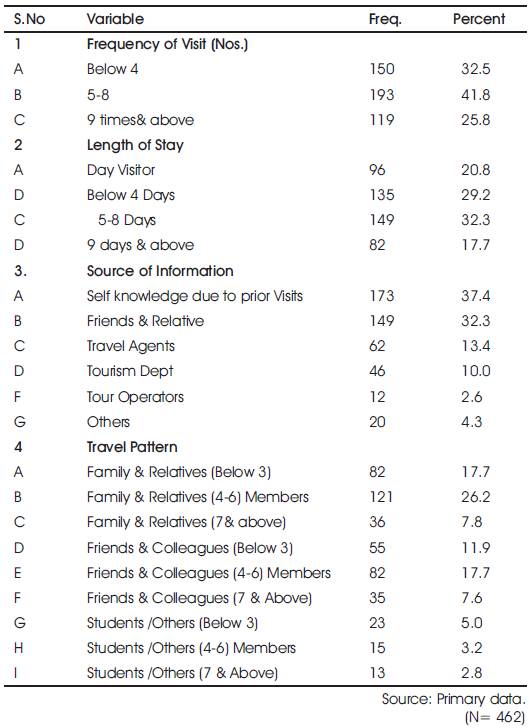
Table 3. Travel Behavior Characteristics of the Respondents
The following travel behavior pattern can be observed. Respondents traveled in family and relative groups of various sizes(51.8 percent), followed by family and colleagues(37.2 percent), and students and others(11.0 percent). Thus, travel with family and relatives, and family colleagues is the most popular pattern. Thus informal sources(self-knowledge, friends and relatives) were the dominant sources(69.7 percent) of information. With regard to the length of the stay, 32.3 per cent of the respondents stayed for 5 to 8 days, followed by 29.2 per cent for below 4 days, another 20.8 per cent day-visitors, did not staying for more than 24 hours and 17.2 percent stayed 9 days and above.
With regard to sources of information for the present visit, the largest group of respondents 37.4 percent had self knowledge due to prior visits, 32.3 percent were dependent on friends and relatives, 13.4 percent on travel agents and 10 percent from tourists department, 4.3 percent from other sources, and 2.6 percent from tour operators.
Table 4 presents 10 tourist destination attributes of tourist centres in Chittoor district. These attributes are broadly categorized, on the basis of study results, into satisfying, indifferent and dissatisfying attributes.
“Satisfying” attributes are those with perceptual scores, when compared to expectations scores, having positive mean difference with t-values significant at the .05 level.

Table 4. Results of Paired t-test between Tourists' Satisfaction and Comparison of other destinations with Attributes
Results indicate that tourists were satisfied with “transport facilities”, “hotel/restaurants”, “shopping”, “entertainment,” “staff attitudes with visitors.” The respondents' perceptions with these 5 attributes were positively disconfirmed, which led to their satisfaction with these attributes.
Indifferent attributes are those attributes with nonsignificant t-values (p ≥ 0.05), regardless of a positive or negative mean differences. Attributes namely “friendly atmosphere”, “accommodation” are indifferent attributes. This showed that respondents perceptions were confirmed with their exceptions, which resulted in neutral feelings of the respondents.
Dissatisfying attributes are those attributes with expectation scores outweighing perception scores, that is, with negative mean scores, regardless of a significant or non-significant t-value at the .05 level or below. Results indicate that tourists were dissatisfied with “ place(s) of attraction location,“cleanliness & hygienic“, “safety & security“. These indicate further that respondents 'perception in relation to those attributes were negatively disconfirmed with their expectations, which resulted in dissatisfaction.

Figure 2. Expectation – Perception Grid
The average level of expectation with various attributes of tourist destinations and the average perception of these attributes were calculated for the overall sample. The placement of each attribute on an expectationperception grid was accomplished by using the means of expectation and perception as the coordinates. Twodimensional grid is shown in Figure 2.
This expectation-perception grid positioned the grand means for perception(X=3.28, SD=1.17) and expectation(X=3.17, SD=1.20), which determined the placement of attributes of the axes of the grid. Each attribute on the grid could then be analyzed by locating the appropriate quadrant in which it fell.
Figure 2 is an expectation-perception grid, showing the overall ratings of tourists' perceptions of destination in Andhra Pradesh. “Place(s)of Attraction Location“, “Safety & Security”, “Staff Attitude towards Visitors”, “Friendly Atmosphere“ and “Shopping” are located in the upper right-hand quadrant (high satisfaction, high expectation). Only “Cleanness & Hygienic”, is located in the lower righthand quadrant(low expectation, high perception,). “Entertainment”, is rated below average for both perception and expectation(lower left-hand quadrant). The respondents perceived “Transport facilities” “Hotel/Restaurants”, and “Accommodation” higher than average on perception, but below average on expectations(higher left-hand quadrant).
Hypothesis 1 was tested, using correlation analysis and multiple regression analysis. To get the destination attribute scale ready for analysis, a factor analysis of the attributes was conducted. Four factors emerged from this procedure, which are explained in the following section. And these factors were then utilized multiple regression analysis as independent variables. Hypotheses 2a and 2b were tested through Multivariate Analysis of Variance (MANOVA). hypotheses 3a and 3b by Analysis of Variance (ANOVA) and hypothesis 4 by Multivariate Analysis of Covariance (MANCOVA).
The principal components factor method was used to generate the initial solution. The eigen values suggested that a four- factor solution explained 33.69 per cent of the overall variance after the rotation. The factors with eigen values greater than or equal to 1.0 and attributes with factor loadings greater than 0.1 were reported. From the results of the factor analysis the four factors identified are: required services, support services, main attractions, and local services.
The overall significance of the correlation matrix was 0.000, with a Bartlett test of sphericity value of 2934.883. The statistical probability and the test indicated that there was a significant correlation between the variables, and the use of factor analysis was appropriate. The Kaiser- Meyer-Olkin overall measure of sampling adequacy was 0.482 which was meritorious (Hair, Anderson, and Black 1999) .
From Table 5-varimax-rotated factor matrix, four factors with 22 variables were defined by the original 28 variables that loaded most heavily on them (loading > 0.1). Six attributes were dropped due to the failure of loading on any factor at the level of 0.1 or less. These were “Facilities (Drinking water, Toilets etc)” “Staff attitude towards Visitors” “Taste” “Price” “Communication” “Hotel/ Restaurants” The communality of each variable ranged from 0.080 to 0.522.
To test the reliability and internal consistency of each factor, the Cronbach's alpha of each was determined. The results showed that the alpha coefficients ranged from 0.856 to 1.672 for the four factors. The results were considered more than reliable, since 0.50 is the minimum value for accepting the reliability test (Nunnally, 1967).
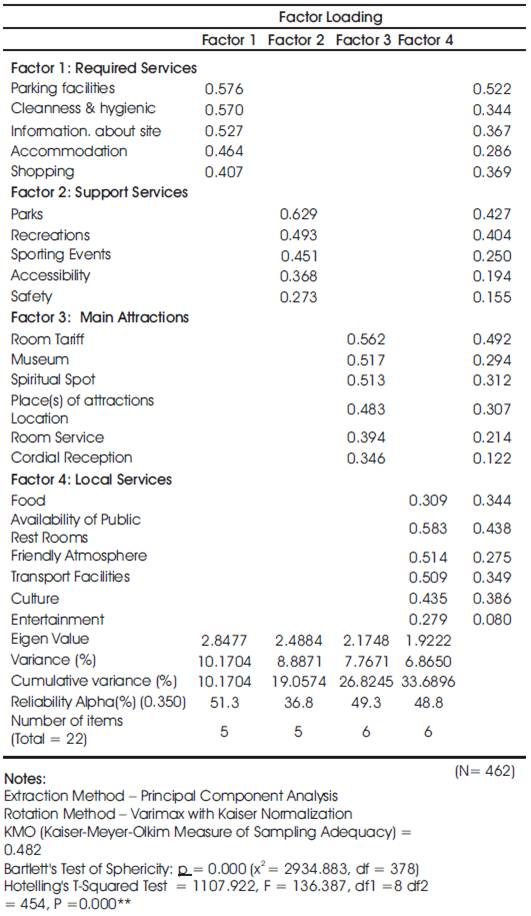
Table 5. Factor Analysis of Results of the Perception of Attributes in Andhra Pradesh
The four factors underlying tourists' perceptions of tourist destination attributes in the Chittoor district were as follows. Required Service(Factor 1) contained eight attributes and explained 10.17 per cent of the variance in the data, with an eigen value of 2.8477 and a reliability of 51.3 per cent. The attributes associated with this factor dealt with the required service items, such as “Parking facilities” “Cleanness & hygienic,” “Information about site,” “Accommodation” and “Shopping”.
Support Service(Factor 2) accounted for 8.89 per cent of the variance, with an eigen value of 2.4884 and a reliability of 36.8 per cent. This factor was loaded with 5 attributes such as “Parks,” Recreations,” Sporting Events,” “Accessibility,” and “Safety”.
Main Attractions(Factor 3) was loaded with Six attributes. This factor accounted for 7.77 per cent of the variance, with an eigenvalue of 2.174 and a reliability of 49.3 per cent. These six attributes are “Room Tariff,“ “Museum,“ “Spiritual Spots,” “Place(s) of Attractions Location,” “Room Services, “and “Cordial Reception,”.
Local Service (Factor 4) contained six attributes. This factor explained 6.87 per cent of the variance, with an eigen value of 1.9222 and a reliability of 48.8. These attributes are “Food” “Availability of Public Rest Rooms,” “Friendly Atmosphere,“ Transport Facilities “ Culture,” and “Entertainment option”.
H1=There is no statistically significant relationship between the select tourist destination attributes and the overall satisfaction of tourists.
A correlation coefficient measures the strength of alinearity between two variables. In the study a correlation coefficient measured the strength of a linearity between the overall satisfaction of the respondents and four factors (Support Services, Main Services, Attractions, and Local Services). The correlation between overall satisfaction and four factors was positive and was significant at the 0.01 level(2-tailed).
To illustrate, the correlation between overall satisfaction and Support services(Factor 1) was 0.102(p=0.028); Main Services(Factor 2) was 0.132(p=0.005); Attractions (Factor3) was 0.170 (p=0.000), Local Service (Factor 4) was 0.138 (P=0.003) Table.6. Therefore, the study indicates that the correlation between overall satisfaction and attractions, local services was higher than that between overall satisfaction and support services and main services.
These results revealed that there is a moderate correlation between overall satisfaction and the tourist destination attributes.

Table 6. Correlation between Overall Satisfaction and Four Factors
In order to further find out support for hypothesis 1, the four orthogonal factors were used in a multiple regression analysis which was employed because it provided the most accurate interpretation of the independent variables. The four independent variables were expressed in terms of the standardized factor scores(beta coefficients). The significant factors that remained in the regression equation were shown in order of importance based on the beta coefficients. The dependent variable, tourists' overall level of satisfaction, was measured on a 5- point Likert-type scale and was used as a surrogate indicator of tourists' evaluation of the tourist spots Andhra Pradesh.
The equation for tourists' overall level of satisfaction was expressed in the following equation:
Ys = β0 + B1 X1 + B2 X2 + B3 X3 + B4 X4 , Where,
Ys = tourists' overall level of satisfaction
β0 = constant(coefficient of intercept)
X1 = Required Services
X2 = Support Services
X3 = Main Attractions
X4 = Local Services
B1,...,B4 = regression coefficient of Factor 1 to Factor 4.
Table7 shows the results of the regression analysis. To predict the goodness-of-fit of the regression model, the multiple correlation coefficient(R), coefficient of determination(R2 ), and F-ratio were examined.
First, the 'R' of independent variables(four factors, X1 to X4 ) on the dependent variable(tourists' overall level of satisfaction, or Ys) is 0.275 which shows that the tourists had positive and high overall satisfaction levels with the four dimensions.
Second, Multiple Linear Regression Model was developed to explain the relationship of the four factors with the overall satisfaction level. This is called Principal Components Regression Analysis which was run using SPSS 13.0 the regression. The model has R2 = 0.076 which means about 8% of the satisfaction can be attributed to the four factors.
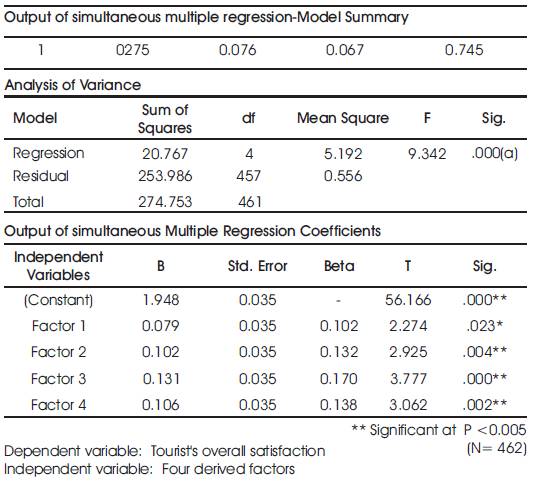
Table 7. Regression Results of Tourists' Overall Satisfaction Level Based on the Dimensions
Lastly, the F-ratio which explained whether the results of the regression model could have occurred by chance, had a value of 9.342(p≤ 0.001) and was considered significant. The regression model achieved a satisfactory level of goodness-of-fit in predicting the variance of tourists' overall satisfaction in relation to the four factors, as measured by the above –mentioned R, R2 , and F-ratio. In other words, at least one of the four factors was important in contributing to tourists' overall level of satisfaction of the tour to Chittoor district.
In the regression analysis, the beta coefficients could be used to explain the relative importance of the four dimensions(independent variables) in contributing to the variance in tourists' overall satisfaction(dependent variable). As far as the relative importance of the four factors dimensions is concerned, Factor 3(Main Attraction, B3 =0.131, P=0.000) carried the heaviest weight for tourists' overall satisfaction, followed by Factor 4 (Local Service, B4 =0.106, p=0.002), Factor 2(Support Services B2 =0.102, p=0.004), and Factor 1(Required Service, B1 =0.079, p=0.023). The results showed that a one-unit increase attraction factor would lead to a 0.131 unit increase in tourists' overall level of satisfaction other variables being held constant.
In conclusion, all underlying dimensions are significant. Based on the results of multiple regression analysis, the hypothesis 1 that there is no statistically significant relationship between the select tourist destination attributes and the overall satisfaction of tourists, is rejected. Conversely it can be concluded that there is a significant relationship between tourists overall satisfaction and tourist destination attributes.
The Fitted model is Y = 1.948 + 0.079 * F1 + 0.102 * F2 + 0.131* F3 + 0.106 *F4,
Where Y is the overall Satisfaction Score.
From the Standardized regression coefficient it can be seen that the highest preferred factor to explain satisfaction is F3 followed by F4 , F2 and F1 in that order. Further, all the regression coefficients are found to be statistically significant(p<0.005).
H2a : There is no statistically significant difference between derived factors in relation to tourists' demographic characteristics such as gender, age, state, education level, occupation and total household incomes.
H2b: There is no statistically significant difference between derived factors in relation to travel behavior characteristics of tourists such as frequency of visit, length of stay and travel group size.
Multivariate Analysis of Variance (MANOVA) was used to test the hypotheses 2a and 2b. This study made use of MANOVA to determine whether there exist differences between derived factors and demographic and travel behavior characteristics. The results of the analysis are presented in Table 8.
The results of MANOVA reveal that respondents' mean scores for the dimensions of tourists' perceptions showed variation by total household incomes (Wilks' Lambda F = 2.541, P < 0.001). The results of ANOVA show that the total household incomes differed only on Factor 1, Support Services (F=3.283, P = 0.006). The groups which had Rs. 1,00,001 to 1,20,000 and Rs. 1.20 Lakhs & above provided the lowest mean score(M = -0.0017) (M= - 0.4531) On the other hand, the group which earned more than Rs. 60,001-80,000 provided the highest mean score (M=0.15196).
Moreover, in travel behavior characteristics of tourists, the results shown in Table 9 of MANOVA reveal that respondents' mean scores for the dimensions of tourists' perceptions differed by the length of stay (Wilks' Lambda F = 6.041, p= 0.001). The results of ANOVA indicate that the length of stay differed only on Factor 3, Attraction (F= 6.003, p= 0.001). The group which stayed for above 8 days provided the lowest mean score(M= -0.1017). However, the group which stayed for below 4 days provided the highest mean score (M= 0.492), suggesting that there is a positive relationship between the reported satisfaction and length of stay. Hence, hypotheses 2a and 2b are rejected, meaning that there exists statistically significant relationship between overall satisfaction and demographic and travel behavior characteristics.
H3a : There is no statistically significant difference in the tourists' overall satisfaction and the tourists demographic characteristics such as gender, age, state, education Occupation, and Income.
H3b : There is no statistically significant difference in the overall satisfaction of tourists controlling for demographic characteristics such as frequency of visits, length of stay, and travel group size.

Table 8. MANOVA and ANOVA on Tourists' Perceptions for Demographic Variables
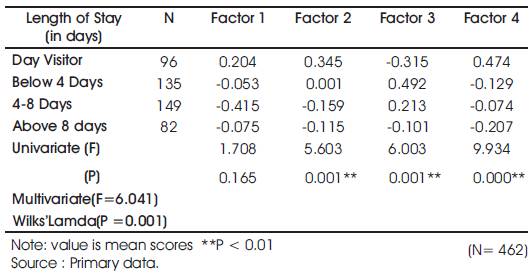
Table 9. MANOVA and ANOVA on Tourists' Perceptions for Travel Behavior
Table 10 presents the two-tailed independent t-test and one-way ANOVA results of the mean difference of overall satisfaction by the demographic characteristics of the respondents.
The results indicate that no significant difference in the overall satisfaction of the respondents was found for age, state, education level, and total household income. Significant difference in the overall satisfaction of the respondents was found by gender(t=2.330 p<0.05) , state(F =4.003, P<0.05), education(F=4.056 P <0.05) and occupation(F =4.319 P<0.05) The results explain that male respondents were more satisfied with Chittoor district tourist destinations than female respondents. Professionals are much interested in this destinations and state-wise those with in Andhra Pradesh are more satisfied. Thus, hypotheses 3a could be rejected for gender, age, state of origin, education, and occupation.
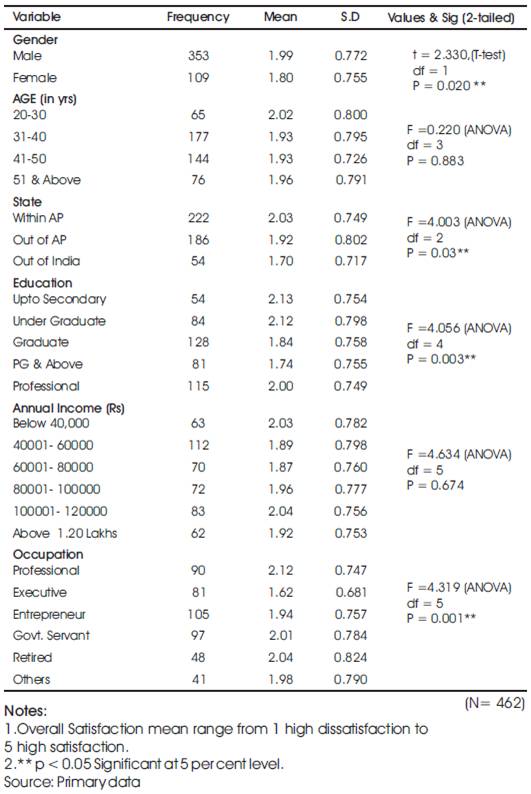
Table 10. Two-tailed Independent t-test and One-way ANOVA Results of the Mean Difference of Overall Satisfaction by Demographic Characteristics of the Respondents
Two-tailed independent t-test and Analysis of Variance (ANOVA) were used in order to identify the mean differences in overall satisfaction by the travel behavior characteristics of the respondents. The results are shown in Table11.
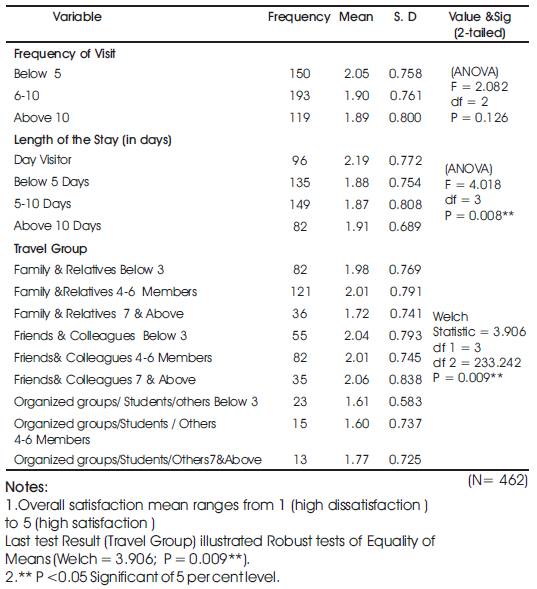
Table 11. Two-tailed Independent Samples t-test and One-way ANOVA Results of Mean Difference of Overall Satisfaction by Travel Behavioral Characteristics of the Respondents
The results indicate that no significant difference in overall satisfaction of the respondents was found in relation to the frequency of visits, length of stay, travel group (One way). However, Robust test of Equality of means suggests that significant differences were found in Frequency of Visit (Welch = 2.117) and Length of stay F= 4.018). The study reveal that the respondents who had experienced travel to tourist destination sites were more satisfied that the respondents who had never experienced travel tourist to spots in Chittoor district. Furthermore, the study explains that the respondents who planned to travel tourists spots for more than 6 months were very satisfied with the destinations. Thus, hypothesis 3b was rejected for length of stay and travel group sizes.
H4: There is a no statistically significant relationship between the select tourists destination attributes and the overall satisfaction of tourists, controlling for select demographic (Income) and travel behavioral characteristics (frequency of visit and length of the stay).
To further understand the relationship between cultural/heritage destination attributes and overall satisfaction with such attributes, and to know how the relationship may show variation, controlling for demographic and travel behavior variables, the study used Multivariate Analysis of Covariance(MANCOVA).
The results shown in Table 12 of MANCOVA reveal that one of the control variables(Length of Stay) controlled the relationship between the overall satisfaction of tourists and derived factors (Wilks' Lambda, F=7.786, p=0.000). Income (Wilks' Lambda, F=1.922, p=0.001) controlled the relationship between the overall satisfaction of tourists and derived factors. Last factor but not least, frequency of visit (Wilks' Lambda, F=1.059, p=0.0376) did not control the relationship between the derived factors and overall satisfaction of the tourists Thus, null hypotheses was rejected, which means that there exists statistically significant relationship between tourists overall satisfaction and tourist destination attributes, controlling income and length of stay variables.
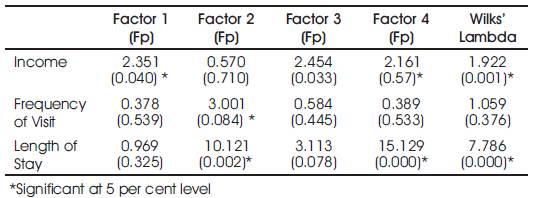
Table 12. Multivariate Analysis of Covariance
To conclude that a few places may have some level of satisfaction or adequacy in the basic and tourist infrastructure facilities, the majority of the places either require a completely new set-up or need to improve upon the existing facilities available. From tourism infrastructure point of view, Kanipakam, Chandragiri Fort, Tirupati , Srikalahsthi or even Tirumala (Lord Balaji) seem to be better equipped than the other destinations or places of tourist interest in Chittoor district. Basic infrastructure facilities are required to be set up or improved in almost all the destinations for a sustainable tourism development in the state and as well as in the district. Among ten destination attributes those attributes to tourists satisfaction are transport facilities, hotels/ restaurants, shopping, and staff attitudes to visitors, Historic Buildings where as the rest of attributes are either neutral or dissatisfying.
The purpose of the study is to identify the relationship between tourist destination attributes and the overall satisfaction of tourists who visited Chittoor district as a tourist destination, and analyze the differences in the level of overall satisfaction of tourists' with respect to demographic and travel behavior characteristics.
It is emphasized that the identification of tourists' characteristics and an investigation of the relationship between the attributes and tourists' satisfaction are needed. It is fest that such research efforts would help tourism practitioners and planners to have a better understanding of tourism and to formulate better strategy and planning about tourism.
The study provided a general picture of the relationship between cultural/heritage destination attributes and tourists' overall satisfaction with the Chittoor district and analyzed tourists' level of satisfaction variations by demographic and travel behavior characteristics. However, the study did not mention the relationship between tourist satisfaction and intention to revisit a destination. Future research should investigate the relationship between tourists' satisfaction and intention to revisit a destination, because repeat visitation to a destination is an important issue for tourism marketers and researchers. Future studies could be applied to other cultural/heritage destinations using a similar research method so that a competitive analysis in different destinations can be explored. Also, more refinement is needed in selecting attributes because some respondents felt there was some ambiguity in the questionnaire items.